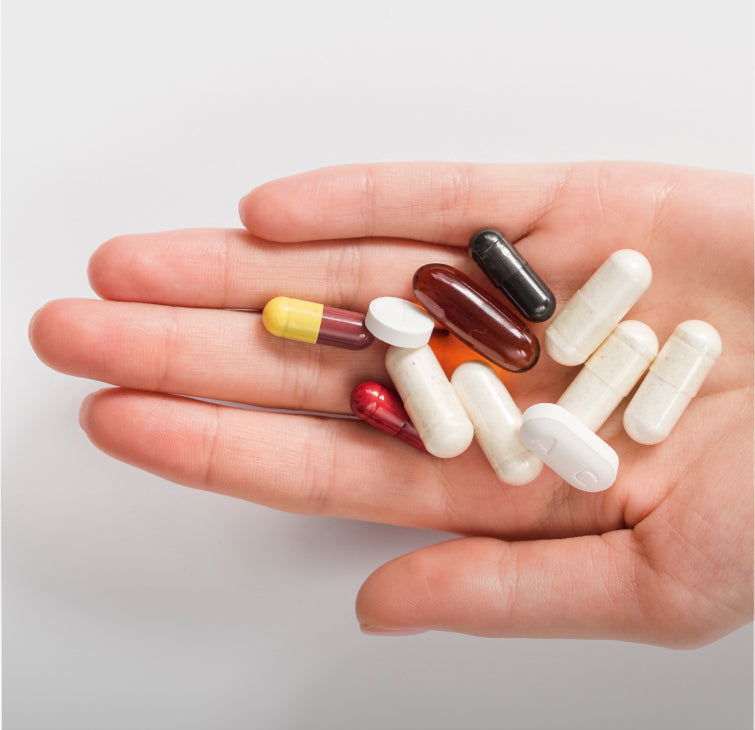Present in trace amounts in our bodies and in our food, trace elements are nevertheless essential for good daily health .
What exactly are trace elements? What are the benefits of these trace elements?
What are trace elements?
The term trace element comes from the Greek “oligo” which can be translated as “not abundant” or “small quantity”.
Trace elements are therefore mineral substances present in very small quantities in the human body (content less than 1 mg/kg of body weight).
This is the case for copper, iodine, iron, fluorine, molybdenum, chromium, selenium, boron, manganese and cobalt.
Although present in trace amounts, these nutrients are essential for staying fit and healthy. Indeed, they play a role in many vital functions such as:
- metabolic or enzymatic reactions;
- the expression of certain hormonal signals;
- the proper functioning of the immune system;
- strengthening the strength of certain tissues such as bones and teeth.
Essential and non-essential trace elements: what’s the difference?
Trace substances present in the human body are classified into two groups: essential trace elements and non-essential trace elements.
What is the difference between the two?
What is an essential trace element?
Some trace elements are considered essential because they play an important role in many metabolic mechanisms or reactions. They are naturally present in the human body.
A deficiency in essential trace elements can then have more or less serious repercussions on the health of the individual (metabolic imbalances, functional disorders, etc.).
Essential trace elements are also divided into two groups:
- Those at risk of deficiency demonstrated in humans: these are iron, iodine, fluoride, selenium, copper, molybdenum, chromium and zinc;
- Those at low risk of deficiency: This means that a deficiency has not been shown to cause a health problem. This is the case for cobalt, manganese, nickel, silicon, vanadium, and tin.
What is a non-essential trace mineral?
Conversely, non-essential trace elements are not naturally present in our bodies.
As is the case with silver, gold, or lithium, they may, however, possess pharmacological properties. These are very useful in treating certain disorders.
What are the health benefits of trace elements?
The benefits of trace elements on health and fitness are numerous, both alone and in synergy with others:
- Silver (Ag): Silver has an interesting anti-infectious and antiviral action in strengthening immunity. This trace element also helps with healing and reducing certain skin problems such as eczema, psoriasis and acne. Silver is recommended to combat fatigue;
- Bismuth (Bi) : Bismuth has long been used for its anti-infectious action on the throat and upper digestive tract. It is particularly recommended for the treatment of sore throats, tonsillitis, pharyngitis or laryngitis;
- Calcium (Ca) plays an essential role in the strength of bones and teeth. It is also involved in muscle contraction and has a preventive effect on high blood pressure;
- Chromium (Cr) promotes lipid metabolism. It reduces cholesterol, contributes to better blood sugar levels and regulates appetite. This is why it can be recommended for weight control;
- Cobalt (Co) is not naturally present in our bodies. However, the benefits of this trace element are numerous. First of all, it is closely linked to the metabolism of vitamin B12. Furthermore, it is a hypotensive, hypoglycemic and vasodilator. It is therefore recommended for migraines or in cases of fatigue;
- Copper (Cu) has an anti-infectious action that is very useful for preventing and fighting flu and other viral infections during the winter. It is also effective against joint pain and certain skin problems;
- Fluorine (F) : the benefits of this trace element have been known for a long time. Fluorine contributes in particular to strengthening bone tissue and teeth;
- iron (Fe) : iron is an essential element because it is notably involved in the metabolism of hemoglobin. In fact, it indirectly contributes to good oxygenation of tissues, particularly during exercise;
- iodine (I) : this trace element is essential for the synthesis of thyroid hormones. These hormones influence many functions, including cardiac, muscular, digestive and nervous system functions;
- lithium (Li) : involved in the regulation of the nervous system, lithium helps to alleviate sleep disorders, depression and anxiety;
- magnesium (Mg) : a cardiac and immune system stimulant, magnesium is also indicated for sleep disorders, fatigue, stress and migraines;
- Manganese (Mn) : The benefits of this trace element are well documented. First of all, it is an anti-allergic recommended as a preventative measure against allergies. It stimulates the immune response and has interesting antioxidant properties;
- molybdenum (Mo) : recommended for people suffering from Crohn's disease, molybdenum is involved in many metabolic reactions. Its consumption requires scrupulously respecting the recommended dosages;
- Nickel (Ni) : Nickel is essential for carbohydrate metabolism and iron absorption. It helps regulate the pancreas. These functions are essential for controlling diabetes, excess weight, and pancreatic and liver disorders.
- Gold (Au) : No trace of gold is found in the body in its natural state. However, this trace element can be of interesting support to stimulate the immune system, against rheumatism or in cases of fatigue. Combined with other trace elements such as copper, it allows for a faster recovery following an infection;
- Phosphorus (P) : From a physiological point of view, phosphorus is a regulator of calcium metabolism. It plays an important role in bones, particularly in cases of osteoarthritis or osteoporosis. It is also a diuretic and an antispasmodic;
- Potassium (K) is involved in regulating heart rate and transmitting nerve impulses. Potassium can be recommended in cases of heart problems and hypertension. These are not the only benefits of this trace element since it has a diuretic function and is involved in muscle contraction;
- Selenium (Se): The benefits of this trace element are essential for good health. Indeed, it is an anti-infective, but also an antioxidant. It protects against aging of cells caused by free radicals. In addition, selenium facilitates the excretion of heavy metals that are toxic to the body;
- Silicon (Si) is essential for the synthesis of connective tissue. This trace element stimulates cell growth. It is also a remineralizer. In fact, it is particularly indicated for strengthening bones or in cases of decalcification or osteoarthritis;
- Sulfur (S) is involved in key metabolic reactions such as the synthesis of amino acids. It is also involved in the regulation of respiratory mucous membranes. It is therefore recommended in cases of allergies. Detoxification, cardiovascular disorders, rheumatism, it is an important trace element for good daily health;
- vanadium (V): vanadium is mainly involved in lipid metabolism;
- Zinc (Zn): This mineral is involved in many functions of the human body. These include regulation of the hormonal and nervous systems, an antioxidant effect, and an anti-infectious action. It is also recommended for hair loss and brittle nails. Combined with other trace elements, it can also be beneficial for weight control, allergies, and recovery after exercise.
- Boron (Zn): This is a trace element whose role in human physiology is still poorly understood. However, American studies have shown a lower incidence of osteoarthritis and osteoporosis in regions where Boron intake was higher than 3 mg/day. Boron is involved in bone metabolism in combination with vitamin D and Calcium (although the mechanism is not well understood).
Trace elements in food supplements?
Our bodies are unable to synthesize the trace elements they need. The only source, therefore, is through our food and a balanced and varied diet. However, this is not always enough.
Using food supplements can therefore represent an interesting alternative.
That's why our Multivitamin and Mineral food supplement is rich in trace elements. It contains 100% of the Recommended Daily Intake (RDI) for the following trace elements: Iodine, Selenium, Chromium and Molybdenum. In addition, it also provides 25% of the RDI for magnesium .
Many of our formulas also contain trace elements. This is the case for our Iron food supplement , our Vitamin B12 + Iodine and Selenium formula, or Multi Kid , a formula designed to secure vitamin and mineral intake for children.
Fatigue, cramps, stress, sleep disorders, flu, concentration problems, these food supplements help you overcome small dips in form throughout the year.
Bibliography:
- The role of Calcium:
https://solidarites-sante.gouv.fr/IMG/pdf/actions42_pa.pdf
http://www.ipubli.inserm.fr/bitstream/handle/10608/5935/MS_2006_12_1095.pdf?sequence=
- Calcium carbonate:
http://www.efsa.europa.eu/en/efsajournal/pub/612
- Boron:
The Importance of Boron for Healthy Bones and Joints' Newnham Team Nov 1994 www.pubmedcentral.nih.gov
Health Canada: www.hc-sc.gc.ca
 04 74 03 98 80
04 74 03 98 80









